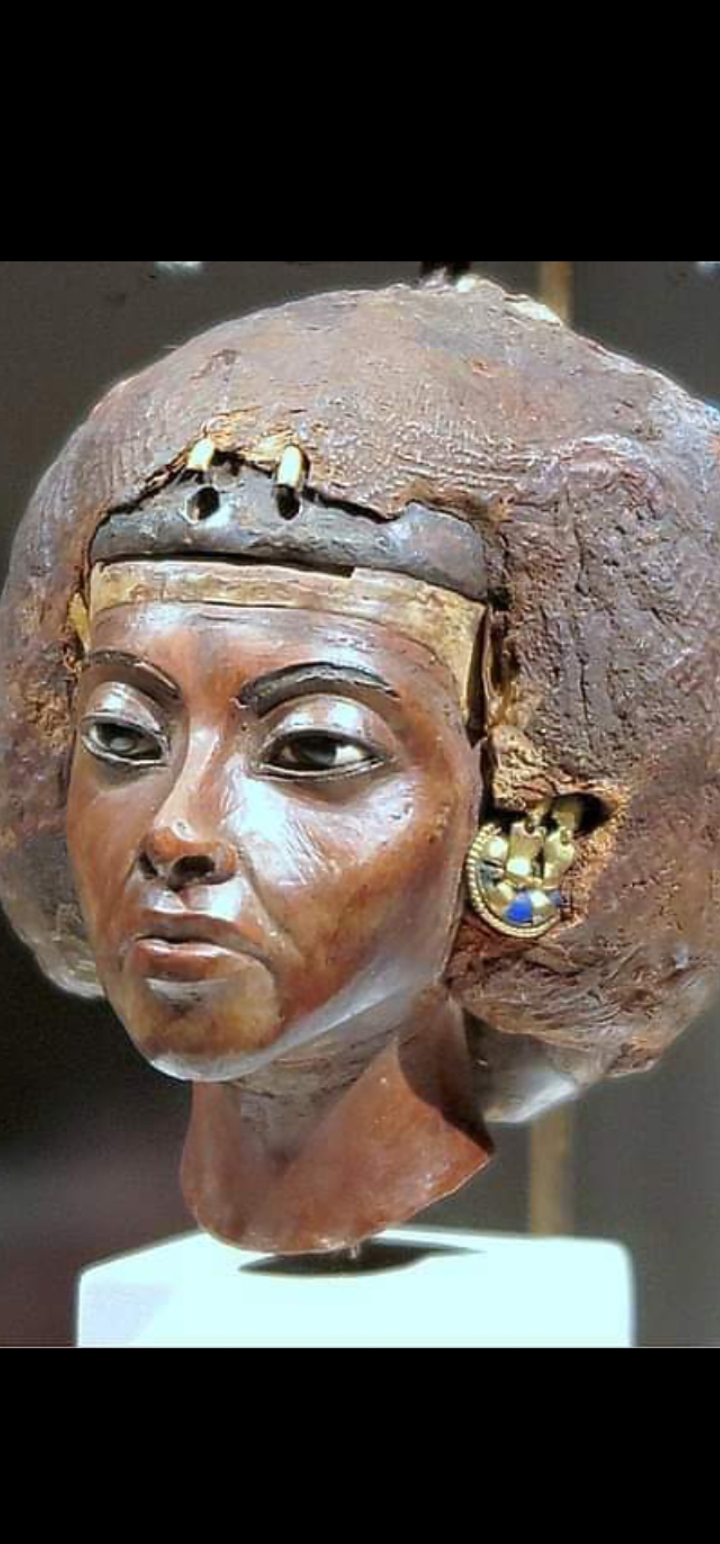And the Soviets began drilling operations in 1970 AD, and the Germans followed them in 1990 AD with a hole that reached a depth of 9.5 km in Bavaria.
المشاركات الشائعة من هذه المدونة
هند عاكف تكشف سبب منعها من دخول حفل افتتاح مهرجان القاهرة السينمائي محمد سليم | فى سينما وتلفزيونهند عاكفهند عاكف 14 نوفمبر 2022 | اخر تحديث: الاثنين , 14 نوفمبر 2022 - 21:11كشفت الفنانة هند عاكف كواليس الموقف الذي تعرضت له بالأمس، أثناء محاولتها دخول حفل افتتاح مهرجان القاهرة السينمائي الدولي.وقالت هند عاكف في مداخلة مع الإعلامي سيد علي ببرنامج "حضرة المواطن" المذاع عبر قناة الحدث اليوم: "السوشيال ميديا كتبت إني مُنعت من دخول المهرجان بسبب فستاني، لكن الموضوع مش كده".نرشح لك - خاص المخرج بيلا تار في ندوته بمهرجان القاهرة السينمائي: لا أعرف أفلام مارفل والسيناريو بالنسبة لي ورق لعينهند عاكفوأضافت: "الفستان طبعا عمل ضجة لإن فيه فكرة سينمائية وتكريم لزملائنا ونجومنا الكبار، ومهرجان السينما إتعمل من أجل هؤلاء النجمات والنجوم".وتابعت: "المشكلة كلها إني نسيت دعوة المهرجان الخاصة بي في البيت، وكان لازم الدخول بالدعوة، وقلت إني مينفعش أروح فحصل سوء تفاهم".طالع أيضا - خاص مصمم فستان هاجر الشرنوبي: واحد من "كوليكشن" ماذا سترتدي صباح لو كانت موجودة الآنوأكملت: "بعض المسؤولين وإدارة المهرجان تدخلوا وحلوا المشكلة في دقايق ودخلت، وده مهرجان بلدي مقدرش محضرش أو أسيء له ولو بهفوة".هند عاكفيذكر أن هند عاكف ظهرت في حفل افتتاح مهرجان القاهرة السينمائي مرتدية فستان مزود بطبعات لوجوه أشهر نجوم الفن الحاضرين والراحلين مثل حسين فهمي ومحمود عبد العزيز وصباح وأحمد زكي وعادل إمام ونعيمة عاكف وغيرهم من النجوم.وانطلقت فعاليات الدورة 44 لمهرجان القاهرة السينمائي الدولي، مساء الأحد، على المسرح الكبير بدار الأوبرا المصرية، وتستمر حتى يوم الثلاثاء الموافق 22 نوفمبر الجاري.وعرض في افتتاح مهرجان القاهرة السينمائى الدولى بدورته الـ 44، فيلم The Fabelmans للمخرج ستيفين سبيلبرج، وهو من بطولة، جابريل لابيل، ميشيل ويليامز، بول دانو، سيث روجن، جيني برلين، جوليا باترز، روبن بارتليت، كيلي كارستن، جود هيرش، إيزابيل كوسمان، كوبر دودسون، ومن تأليف ستيفين سبيلبرج و توني كوشنر، وإخراج ستيفين سبيلبرج.وتدور أحداث الفيلم حول شاب يدعى سامي فابلمان ينشأ في فترة ما بعد الحرب العالمية الثانية في ولاية أريزونا، ويكتشف كيف يمكن أن تساعده قوة الأفلام على رؤية الحقيقة، ويستمد الفيلم مصدر إلهامه من حياة مخرجه سبلبيرج.وتضم لجنة تحكيم المسابقة الدولية، كل من المخرجة اليابانية ناعومي كاواسي، رئيسة لجنة التحكيم، ومديرة التصوير نانسي عبد الفتاح، من مصر، والممثلة سوارا بهاسكار، من الهند، والمؤلف الموسيقي المصري راجح داود، والممثلة ستيفانيا كاسيني، من إيطاليا، والمخرج خواكين ديل باسو، من المكسيك، والممثل سمير قواسمي، من فرنسا.هند عاكففيما تضم مسابقة أسبوع النقاد الدولية، الكاتب بين شاروك، من المملكة المتحدة، والممثل المصري كريم قاسم، والناقدة هدى إبراهيم، من فرنسا، وتضم لجنة تحكيم مسابقة آفاق السينما العربية، الممثل ميشيل كمون، من لبنان، والمنتجة مفيدة فضيلة، من تونس، ومصممة الملابس ريم العدل، من مصر.كما تتضمن لجنة تحكيم مسابقة الأفلام القصيرة، كل من المخرج مايكل أنجلو فرامارتينو، من إيطاليا، وهو رئيس لجنة تحكيم المسابقة، والمنتج والسينارست أحمد عامر، من مصر، والممثلة ريم تركي، فرنسا / تونس، أما لجنة تحكيم جائزة أفضل فيلم عربي، فتضم كل من الممثل المصري أحمد مجدي، والمبرمجة دوروتا لِخ، من بولندا، والممثلة نور، من لبنان.مهرجان القاهرة السينمائي الدولي، هو أحد أعرق المهرجانات في العالم العربي وأفريقيا والأكثر انتظاما، إذ ينفرد بكونه المهرجان الوحيد في المنطقة العربية والأفريقية المسجل في الاتحاد الدولي للمنتجين في بروكسل "FIAPF".اقرأ أيضا:ميريام فارس بزي كرة القدم في جلسة تصوير أغنية كأس العالم (صور)رمضان 2023 - الجمهور يلاحق محمد رمضان في الجمالية أثناء تصوير "العمدة" (فيديو)حسين فهمي يحرج بوسي شلبي على السجادة الحمراء ويرفض التصوير معها (فيديو)صبري فواز عن إطلالة أروى جودة ودينا: واحدة لابسة فستان من أيام الفراعنة والتانية لابسة ملاية لفلا يفوتك: تحليل خناقة نقيب الموسيقيين مصطفى كامل ومطربي الرابحمل آبلكيشن ن القاهرة السينمائي 44أفلام مهرجان القاهرة السينمائي 44نرشح لكمهند عاكف هند عاكف: رانيا يوسف أفضل من روبي في الإغراء وأحب رؤية خالد يوسف الإخراجيةمنتخب تونس موعد والقنوات المجانية الناقلة لمباراة تونس وأستراليا في كأس العالمهند عاكف هند عاكف باكية: زميل إداني دعوته لحضور حفل الافتتاح وصعبان عليا تاريخيالمنتخب السعودي موعد والقنوات المجانية الناقلة لمباراة السعودية وبولندا في كأس العالممهرجان الفيلم الروسي دبي تستضيف النسخة الأولى من مهرجان الفيلم الروسيوجيه الليثي وفاة المنتج وجيه الليثي عم الإعلامي عمرو الليثيسيد رجب في كيرة والجن سيد رجب يكشف سبب تحول شخصيته في "كيرة والجن"أمير المصري الملخص- أمير المصري في "أسرار النجوم" يكشف عن نصيحة عمر الشريف وسبب حذف مشاهد له في The Crown ومواصفات فتاة أحلامهكاملة أبو ذكري كاملة أبو ذكري: لا يوجد جزء ثاني من "بـ100 وش"باسم سمرة باسم سمرة: أحمد السقا ومخرج "إبراهيم الأبيض" عملولي أزمةكأس العالم تعرف على جدول مباريات يوم الجمعة 25 نوفمبر في بطولة كأس العالم والقنوات الناقلةأمير المصري أمير المصري: أتمنى تقديم السيرة الذاتية لأحمد رمزيمنتخب قطر موعد والقنوات الناقلة لمباراة قطر والسنغال في كأس العالمصناع Crazy Ex-Girlfriend يعلقون لأول مرة على النسخة العربية مجنونة بيك صناع Crazy Ex-Girlfriend يعلقون على النسخة العربية "مجنونة بيك": رائع .. كيف يمكننا مشاهدته؟أبطال آخر دور قبل عرضه بأيام.. كل ما تريد معرفته عن مسلسل "آخر دور"الملصق الدعائي للمسلسل Netflix تعلن موعد عرض الجزء الرابع من You.. منقسم على جزأينميرهان حسين ميرهان حسين تغني "كلمتين وبس" في فيلم "إتنين للإيجار" (فيديو)فيلم إتنين للإيجار إسعاد يونس تعود للإنتاج ... طرح البوستر التشويقي لفيلم "إتنين للإيجار"إلهام شاهين #شرطة_الموضة: إلهام شاهين ترتدي سويت شيرت سعره يتعدى 100 ألف جنيهفينسينت رودريجيز ومسلسل مجنونة بيك بطل Crazy Ex-Girlfriend يعلق على النسخة المصرية "مجنونة بيك": مسلسلنا يؤثر في مشاهدين من جميع الخلفيات أخبار متعلقةهند عاكف هند عاكف بإطلالة فرعونية في حفل افتتاح مهرجان القاهرة السينمائيهند عاكف هند عاكف تثير الجدل بفستان يحمل وجوه أشهر نجوم الفنهند عاكف من النجوم الذين ظهروا على فستان هند عاكف بافتتاح مهرجان القاهرة؟حسن أبو الروس حسن أبو الروس يتخلى عن إطلالاته الغريبة في القاهرة السينمائي...هل التزم بقرارات حسين فهمي؟هند عاكف مشادة بين هند عاكف وأمن مهرجان القاهرة السينمائي: أنا فنانة ومن حقي أدخل (فيديو)كاملة أبو ذكري كاملة أبو ذكري: كنت أتمنى أمي تحضر تكريمي في القاهرة السينمائيكواليس مهرجان القاهرة السينمائي شريف منير ومي عمر وخالد سليم...لقطات سجلت تواضع النجوم في كواليس القاهرة السينمائي (فيديو)هدى الإتربي هدى الإتربي تتصدر التريند بعد ظهورها في مهرجان القاهرة السينمائي ... هل أجرت عمليات تجميل؟أهم الأخباربعد انتشار تسجيل منسوب له ... والد حسام حبيب يحذر ويهددوالد حسام حبيب وشيرينهند عاكفهند عاكف: رانيا يوسف أفضل من روبي في الإغراء وأحب رؤية خالد يوسف الإخراجيةشيرين عبد الوهاب وأنغامشيرين عبد الوهاب توجه رسالة إلى أنغام: كلنا جنبك لحد ما ترجعيلنا بالسلامةأصالة5 إطلالات لأصالة في "موسم الرياض" ... و"لوك" جديد يلفت الأنظارالمنتخب السعوديموعد والقنوات المجانية الناقلة لمباراة السعودية وبولندا في كأس العالم احدث الفيديوهاتالمزيدتحليل النغمات مع عمك البات- تقييم أغنية كأس العالم "توكو تاكا" منذ 27 دقيقة مصري يطرح أغنية جديدة بعنوان "حالة عامة"... ويضع اللمسات الأخيرة لألبومه الجديد منذ يومين ماهر موصلي يراجع 1899...كيف طرح المسلسل فلسفة كهف أفلاطون؟ منذ 4 أيام باللهجة اللبنانية … هايدي موسى تطرح أغنية "
هند عاكف تكشف سبب منعها من دخول حفل افتتاح مهرجان القاهرة السينمائي محمد سليم | فى سينما وتلفزيون هند عاكف 14 نوفمبر 2022 | اخر تحديث: الاثنين , 14 نوفمبر 2022 - 21:11 كشفت الفنانة هند عاكف كواليس الموقف الذي تعرضت له بالأمس، أثناء محاولتها دخول حفل افتتاح مهرجان القاهرة السينمائي الدولي. وقالت هند عاكف في مداخلة مع الإعلامي سيد علي ببرنامج "حضرة المواطن" المذاع عبر قناة الحدث اليوم: "السوشيال ميديا كتبت إني مُنعت من دخول المهرجان بسبب فستاني، لكن الموضوع مش كده". نرشح لك - خاص المخرج بيلا تار في ندوته بمهرجان القاهرة السينمائي: لا أعرف أفلام مارفل والسيناريو بالنسبة لي ورق لعين هند عاكف وأضافت: "الفستان طبعا عمل ضجة لإن فيه فكرة سينمائية وتكريم لزملائنا ونجومنا الكبار، ومهرجان السينما إتعمل من أجل هؤلاء النجمات والنجوم". وتابعت: "المشكلة كلها إني نسيت دعوة المهرجان الخاصة بي في البيت، وكان لازم الدخول بالدعوة، وقلت إني مينفعش أروح فحصل سوء تفاهم". طالع أيضا - خاص مصمم فستان هاجر الشرنوبي: واحد من "كوليكشن" ماذا سترتدي ص...
كان حسن طوبار شيخ صيادي المنزلة وصفه المؤرخون بأنه أول مليونير في مصر وقدرت ثروته
# كان حسن طوبار شيخ صيادي المنزلة وصفه المؤرخون بأنه أول مليونير في مصر وقدرت ثروته إبان الحملة الفرنسية على مصر بخمسة ملايين فرنك كذلك كان يملك أسطول صيد يضمّ أكثر من 5 آلاف مركب إلى جانب عدد من مصانع النسيج ومساحات شاسعة من الأراضى الزراعية ولكن عشقه للوطن كان أقوى من حبه لأمواله التي سخرها لمواجهة الحملة الفرنسية رفض طوبار الاحتلال الفرنسي وسخر إمكاناته للتصدي له لذا أحرق جنود الحملة الفرنسية قرية (الجمالية) في مدينة الدقهلية التي كانت في حمايته فصعَّد من مقاومته في إثر ذلك، طلب الجنرال الفرنسي (فيال) في دمياط مقابلة طوبار فرفض وحينما علم بونابرت أرسل بعض الهدايا ومنها سيف من الذهب إلى ( فيال) ليقدمها باسمه إلى المجاهد كي يستميله بها وكتب فيال إلى الشيخ حسن يستدعيه لتسلم هذه الهدايا فرفض وواصل المقاومة وكما يذكر المؤرخ عبد الرحمن الرافعي في أول جزء من ( تاريخ الحركة القومية وتطور نظام الحكم في مصر ) كان طوبار الزعيم الوطني الذي أشعل نار الثورة في مختلف البلاد الواقعة بين دمياط والمن...




تعليقات
إرسال تعليق
مرحبا بكم في ترند اللحظة ٢٠٥٠
Welcome to the trend of the moment 2050